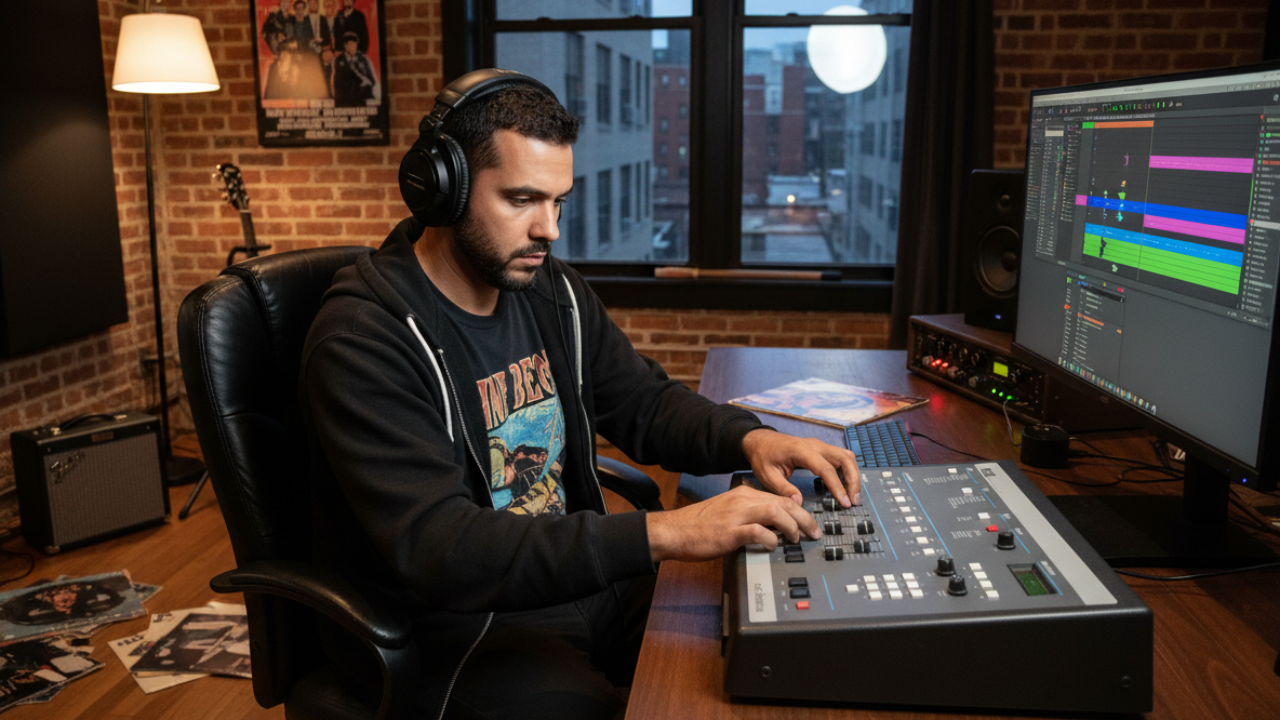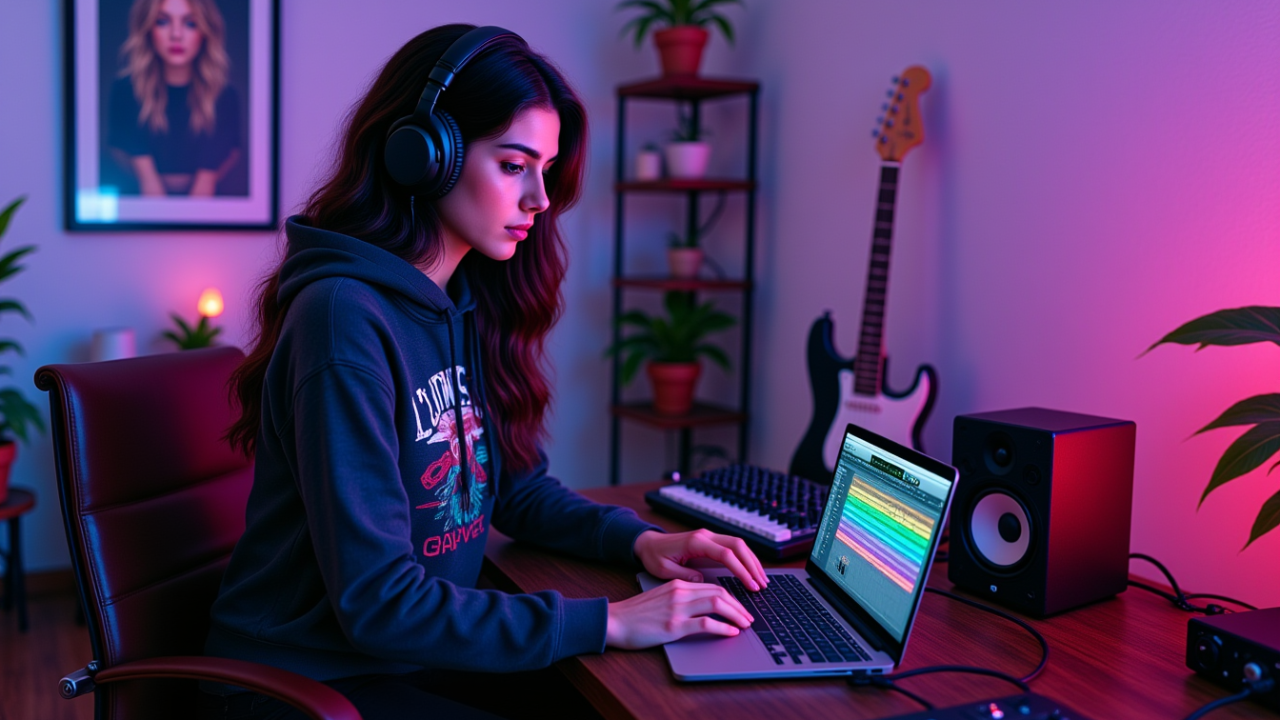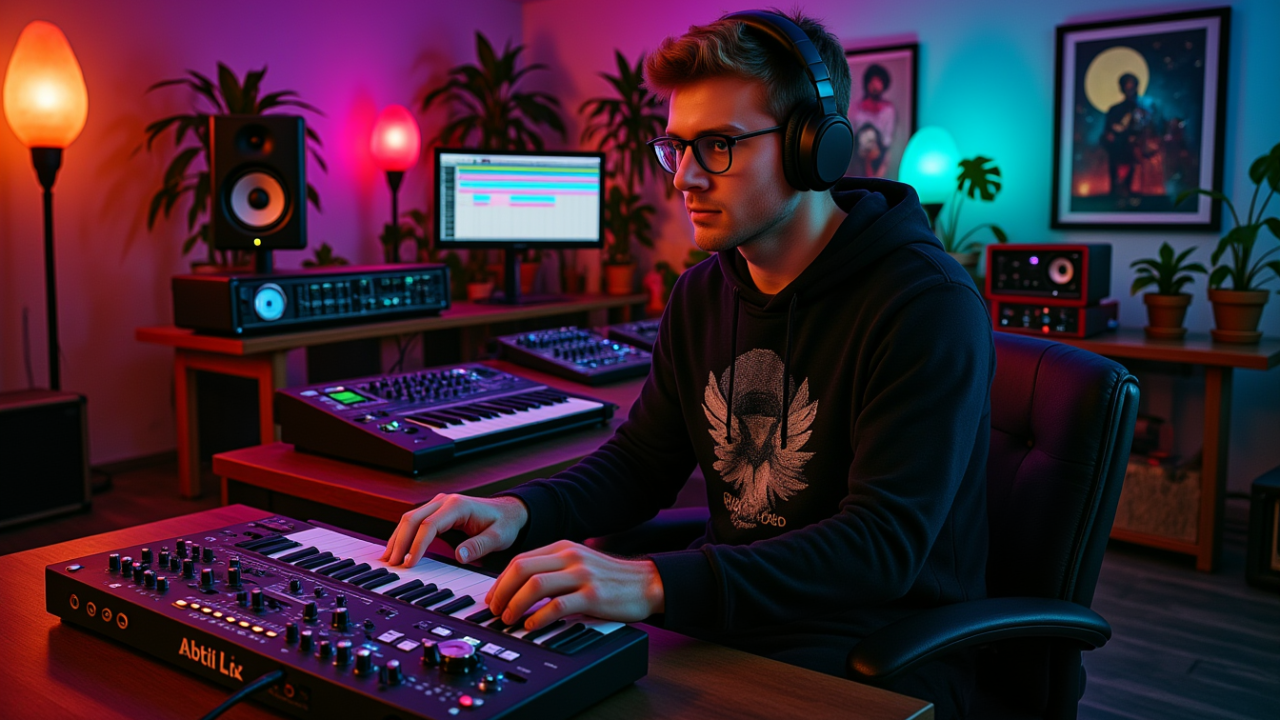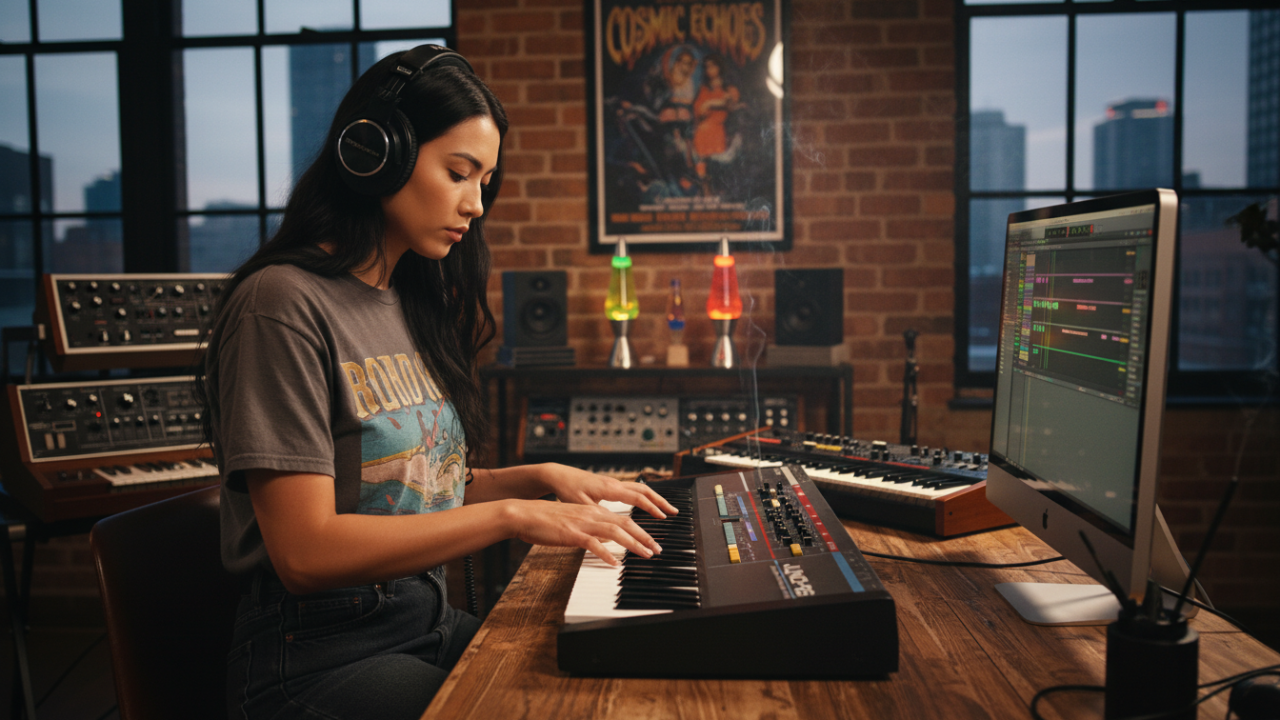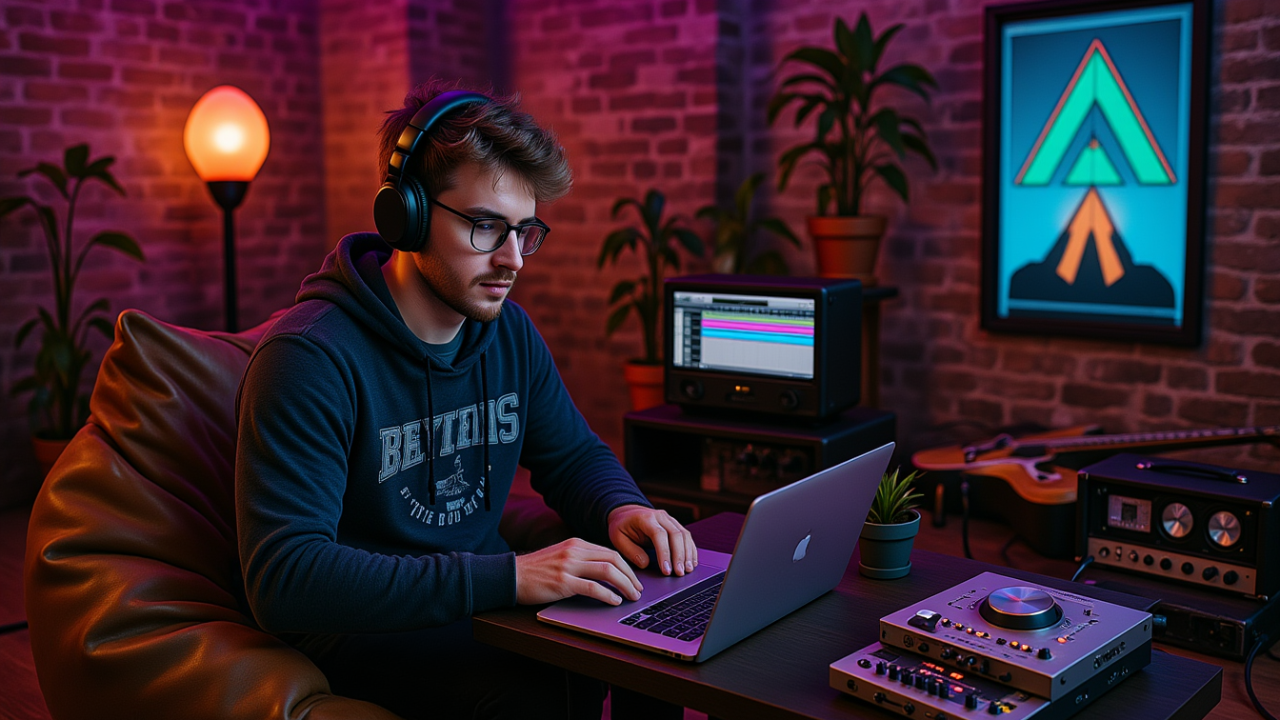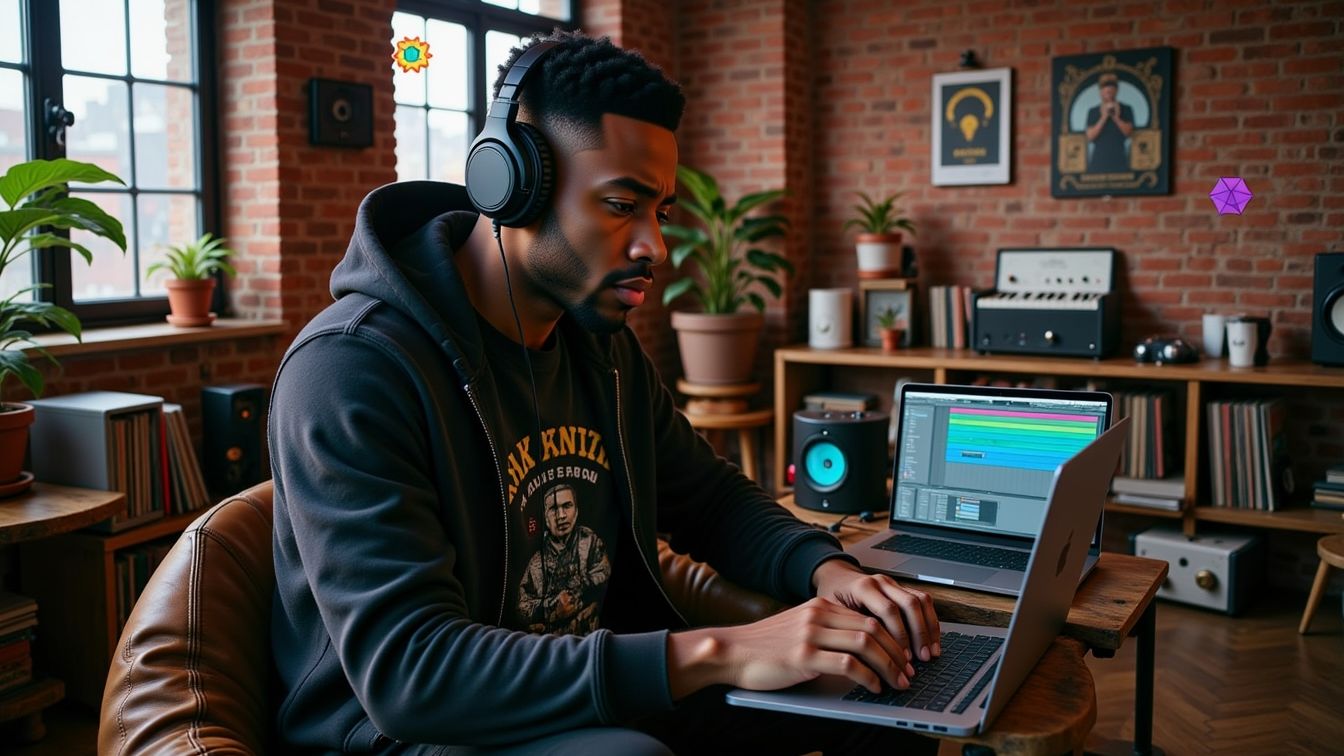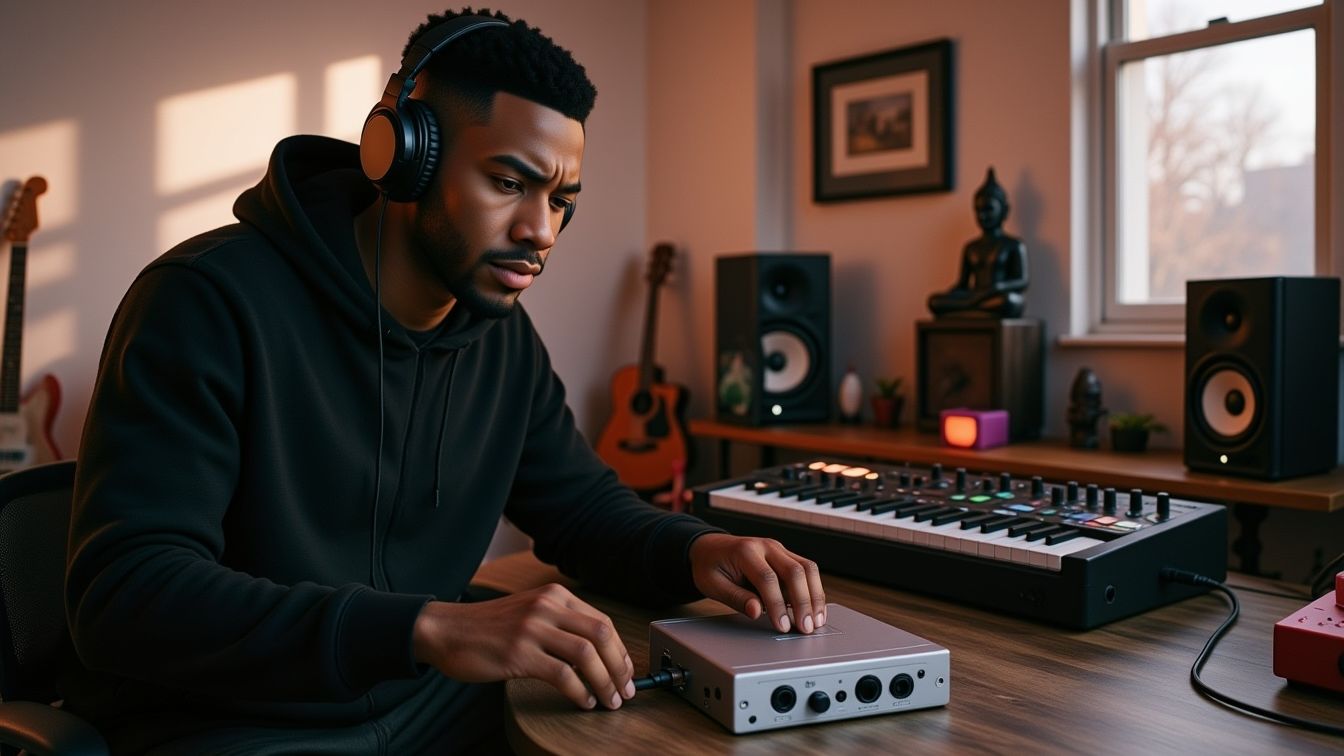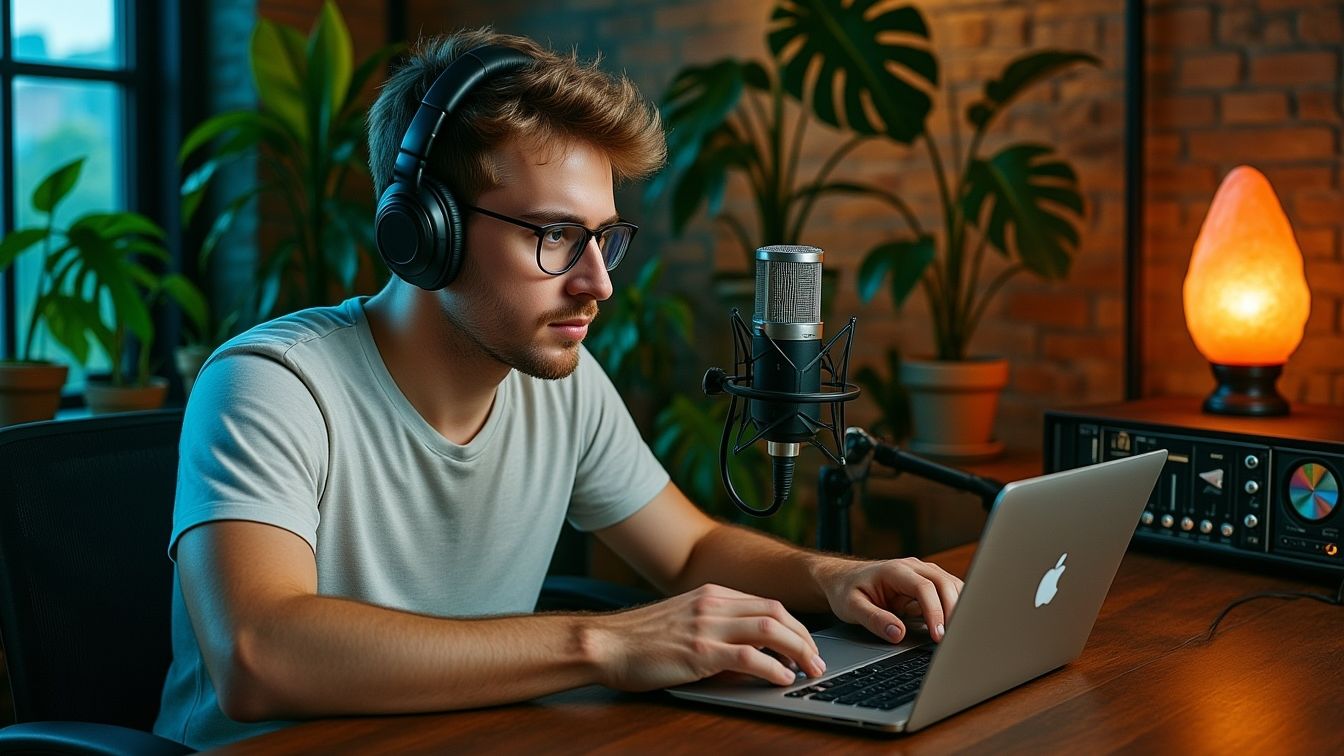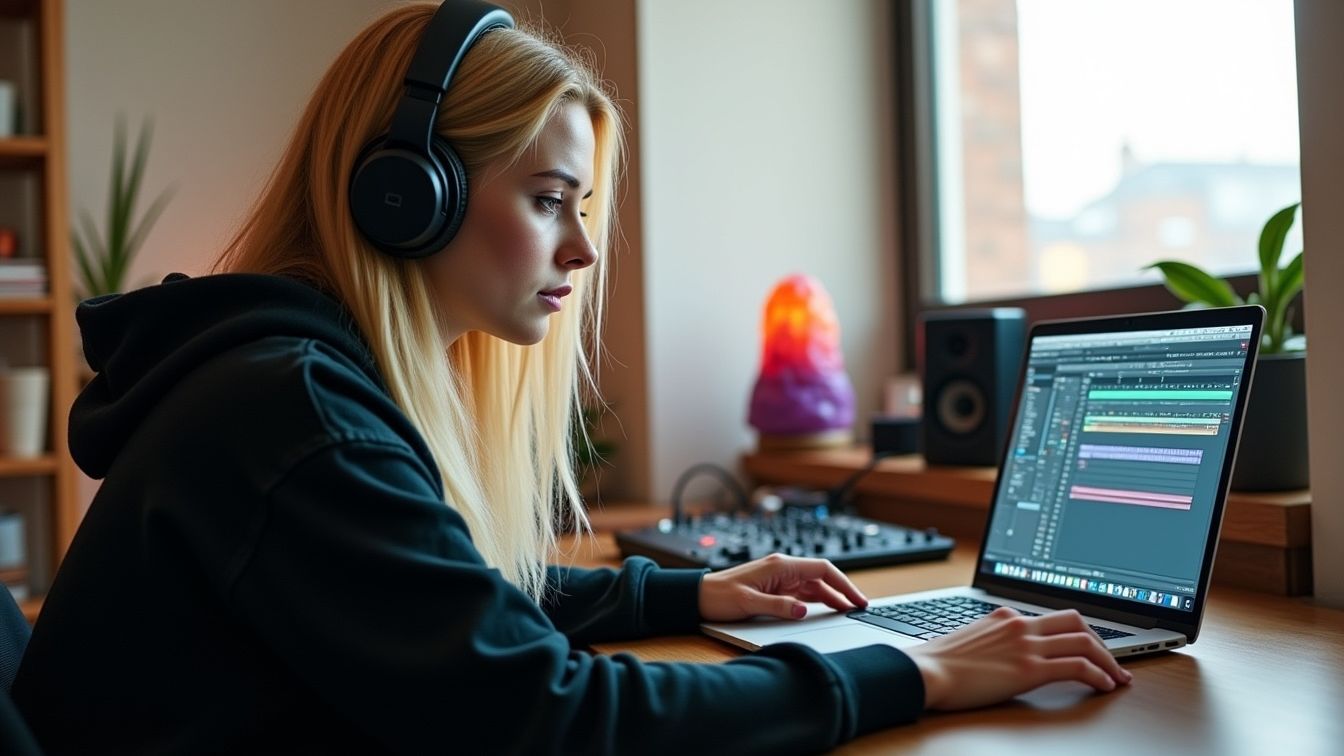Music Production MAGIC
Get your FREE download of my 50 magic moves that will make your songs, recordings and mixes sound better instantly.
Give me the MAGIC 🪄Introduction — The Grit That Built a Genre
Some machines make beats.
Others start revolutions.
The SP-1200 didn’t sound clean.
It didn’t sound polished.
It sounded true.
Dusty, punchy, grainy — like the concrete it came from.
It didn’t try to imitate real drums. It carved out a new musical univer...
Introduction — The Secret to Huge Guitar Sounds
Layered guitars are the backbone of rock, pop, metal, indie, and cinematic production.
But big guitar tones don’t just “happen.” They come from a repeatable, organized workflow that keeps everything tight, in tune, and mix-ready.
This 10-step process...
Introduction — Why Some Music Connects Instantly
Some songs connect in the first few seconds.
Others never quite land — even if they’re well-produced.
Instant connection doesn’t come from complexity, perfection, or expensive gear.
It comes from clarity, emotion, and human alignment.
Across every ...
Introduction — The Sound of Memory
Not every legendary synth is complex.
Not every classic is expensive.
Some machines become iconic because they make everyone sound good.
The Roland Juno-106 is that machine.
Warm pads.
Punchy bass.
Velvety leads.
A chorus that turns simple notes into cinematic n...
Introduction — The Three Forces Behind Every Great Track
Every powerful piece of music — from cinematic scores to club bangers — carries three core qualities:
-
Ethos → identity
-
Pathos → emotion
-
Logos → clarity and structure
These ideas come from ancient rhetoric, but they apply p...
Introduction — The Part You Can’t Forget
Every great song has a moment that grabs your attention and doesn’t let go.
That moment is the hook.
Some hooks are melodies.
Some are lyrics.
Some are beats, riffs, samples, or even textures.
But they all share one purpose:
to make the song unforgettable...
Introduction — The Machine With Street Soul
Some drum machines were built for studios.
The Oberheim DMX was built for streets, stages, and subways.
It didn’t shout.
It didn’t try to be futuristic.
It simply hit harder than anything else of its time.
Where the LinnDrum was glossy, the DMX was raw....
Introduction — The Hidden Geometry Behind All Music
Long before plugins, DAWs, and waveforms, the Pythagorean school claimed something radical:
Number is the invisible structure behind all musical experience — and behind nature itself.
To them, music wasn’t just sound.
It was geometry made audib...
Introduction — The DAW Debate That Never Ends
Few questions create more confusion for new producers than:
“Should I use Ableton Live or Pro Tools?”
Both DAWs are powerful.
Both are used by professionals.
Both can make release-ready music.
The real question isn’t which is better — it’s:
Which DAW...
Introduction — The Origin of the Modern Synth
Before the Minimoog, synthesizers were giant walls of cables
— mysterious, intimidating, and locked behind lab doors.
Then, in 1970, Moog created something unthinkable:
A portable, playable, soulful instrument
that didn’t look like a machine…
…it loo...
Introduction — The Secret Tool Behind Clean, Clear Recording
Every studio — from bedroom setups to world-class rooms — relies on one small, essential box that quietly saves recordings every single day:
the DI box.
Whether you're recording guitar, bass, keyboards, synths, drum machines, or even ru...
Introduction — The Art of Moving a Mic
Every great recording starts long before plugins, EQ curves, or mixing tricks.
It starts with where you put the microphone.
Move it an inch and the tone changes.
Twist it slightly and the brightness shifts.
Pull back and suddenly the recording breathes.
Th...
Introduction — The Machine That Made the ’80s Move
Before the LinnDrum, machines sounded like machines.
After the LinnDrum, they sounded like records.
In a single moment, technology met feel — precision met groove — and the sound of the future was born.
The LinnDrum wasn’t just another box of bea...
Introduction — The Battle Between Energy and Order
Every mix lives between two worlds:
Punch — the raw, explosive impact that makes you feel the beat.
Control — the smooth, sculpted sheen that makes everything fit.
One pulls you forward. The other holds you steady.
Mastering dynamics is learning w...
Every professional producer knows: Pro Tools doesn’t forgive laziness.
It rewards focus, structure, and awareness.
You don’t “use” Pro Tools — you train with it.
Each click, fade, and crossfade reveals something deeper about who you are in the chair.
It’s not just software — it’s a mirror for your...
Introduction — The Journey of a Song
Every song begins as a spark — a moment of chaos waiting for form.
Through seven stages, that spark becomes sound, and sound becomes story.
These stages are not rigid rules — they’re a rhythm.
Each one feeds the next, looping endlessly through your creative lif...

